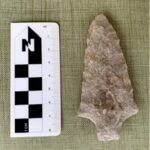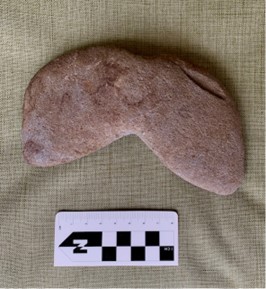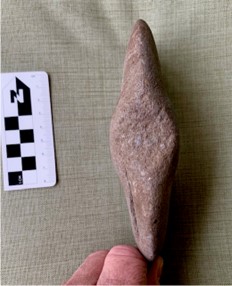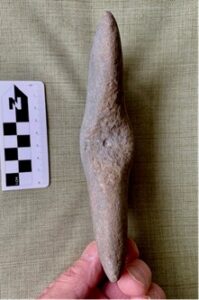Ask an Archaeologist: Ancient Stone Tools Discovered in Hanover County Yield Many Questions, Few Answers
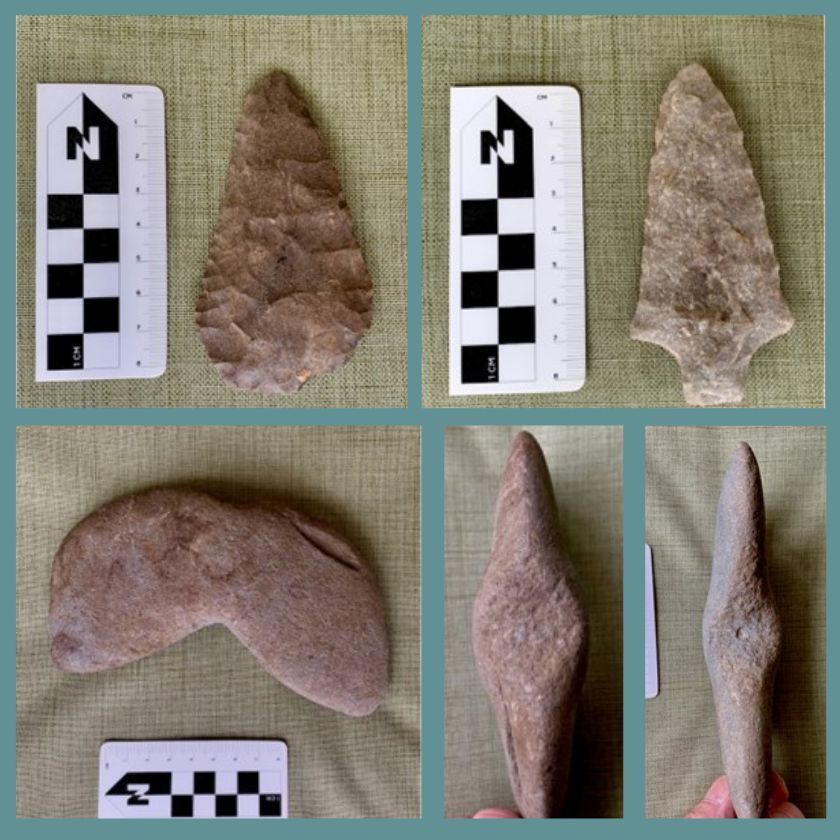
What’s a Genesee point that’s commonly found in the northeast doing in Central Virginia? After identifying three surprising artifacts, the author realizes he has more questions than answers about the individuals who made and used the items.
By Michael Clem, Eastern Region Archaeologist
I recently received an email from someone in Mechanicsville, an area located just northeast of Richmond in Hanover County. While on a walk in the woods behind their house after a rain, they found a stone point and a worked stone poking up from the sandy soil on their property. They pulled the items up and realized they had two unique artifacts. They contacted DHR Archivist Quatro Hubbard to ask his advice. He recommended they get in touch with me.
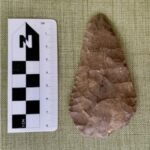
The property owners then sent an email to me describing how they found the artifacts and where the artifacts were located. They also included nice photos of the two items. I was able to identify one of the items as a Genesee-type point. I first thought the second item was a “preform” or “blank” made of a finer grained material – a material not usually discovered in the area. A preform is a piece of stone harvested from a quarry site, or made from a cobble, and worked to the degree that much of the excess material has been chipped away yet left unfinished. This allows the maker to carry the item along and finish it at their leisure. This stone, however, appears to have been sharpened on one edge. It sported some wear from evident use, as if it had been used as a knife or scraper.
The Genesee point is a type that is commonly found in the northeast, in New York and Pennsylvania out to Michigan and Ohio, and is often made of fine-grained chert from those regions. Points like these have been dated at professionally excavated sites, where carbon samples were taken, to about 4,000 to 5,000 years ago, in an era we call the Middle Archaic. It’s uncommon to find one here in Virginia, especially this far south. The point, though, is made of what appears to be the typical quartzite from this area. It’s well made and features all the common traits associated with the Genesee type. The point made me wonder about the person who made it. Were they far from home on a journey? Were they alone or with a group? Or, did a local individual travel northward and, after observing the type there, bring the style back with them to recreate the unique shape here? One thing is certain – we won’t find these answers based on a few random stone tools.
Several days later I received another email from the same folks who found the artifacts. They had found another artifact about 100 feet away from the previous finds. This one was even more intriguing. The object is an unfinished atlatl weight. I had never seen an unfinished one in the field before, and certainly not one that was unbroken like this. When I say it’s unfinished, I mean that there should be a hole bored through the center of the weight. It’s clear from the look of this object that someone began the process of creating the atlatl, but never completed it. Why was that? Was the atlatl dropped? Did something happen to this person to prevent them from finishing it? Also, is the atlatl associated with the other artifacts unearthed nearby? There are always more questions than answers in archaeology. Perhaps that’s what keeps us going; we are always looking for just that one answer.
An atlatl weight is a tool that provides mass to a dart/spear thrower to improve the speed and accuracy of the weapon. An atlatl is a handle that extends the arm of the hunter to help propel the dart toward the prey. If you’ve ever seen a person with a dog at the park using a tennis ball thrower to help the ball travel farther, you’ll understand what the atlatl does. This video shows a former state archaeologist demonstrating a few examples and describing what we know about the atlatl system.
After identifying the artifacts, I visited the family who found the items. We had a nice walk through the property looking for other artifacts and I continued to assess the location. While archaeological sites can exist in almost any location, certain kinds of sites are more likely to be found in particular settings. For instance, a Late Woodland settlement is more than likely to be located on a floodplain of a river or larger stream. Why is that? It’s because we’ve learned these occupants adopted an agricultural existence and the wide river bottoms, with their fertile soil, provided the best place to raise crops. The streams also provided a good water source and means for transportation. As with most archaeological sites, we find that water is key. Most sites are found within a short distance to a water source, whether it’s a large river or a small spring.
The family’s property is also located near a water source. There is a small spring-fed stream running on the property just below the site, which sits up high on a rise. The site would have been a good vantage point from which to spot game as it came to the stream to drink. I registered the site within the state database of historical and archaeological resources, known as the Virginia Cultural Resource Information System (VCRIS), where researchers can look it up for future studies and add new information. Maybe new research can inform us in some way about site localities, the movement of people over time, and where else these Genesee points have been found in Virginia. Again, there are always a lot of questions. And so it goes.
All photos by Michael Clem/DHR.
